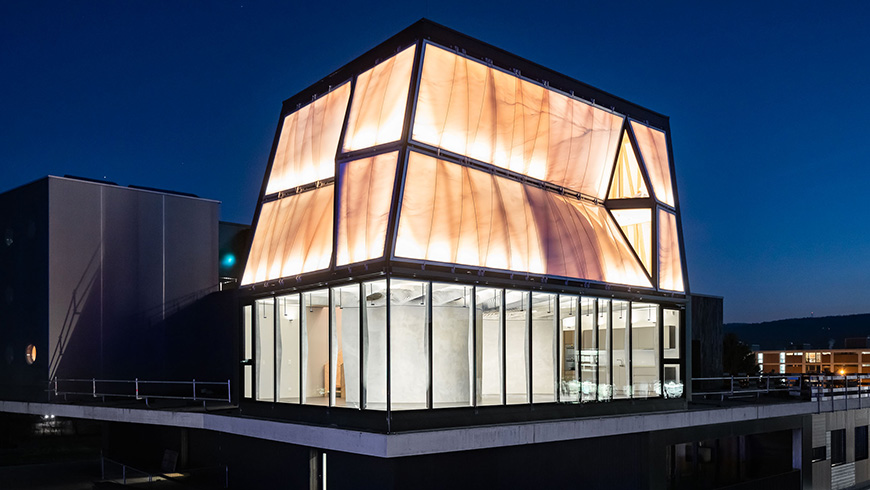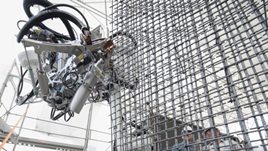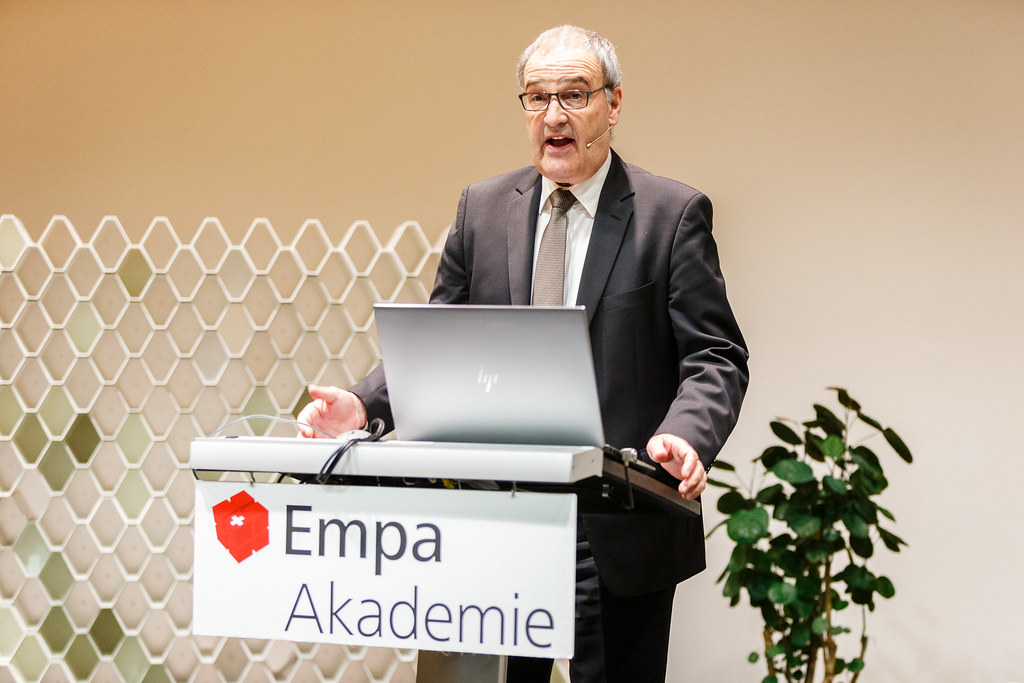Opening of the NEST unit DFAB HOUSE
Building digitally, living digitally

From laboratory to architectural application
An intelligent home
Research and industry learn from each other
NCCR Digital Fabrication
ETH Zurich
ERNE Holzbau
Holcim
Laufen
Schenker Storen
V-ZUG
ABB
AGITEC
Bürgin Creations
digitalSTROM
Duscholux
Nussbaum
Pfister
Schibli
Securiton
Sika
ENGIE Service
Frutiger
Joulia
Lehni
Meyer
3Eflow
Carl Meier Sohn
Christenguss
NOE-Schaltechnik
Pemat
Schlatter Industries
Seele
Sommerlatte & Sommerlatte
Stahl Gerlafingen
Stahlton
Welti-Furrer
Zühlke
Building owner
Empa, Swiss Federal Laboratories for Materials Testing and Research, Dübendorf
Concept, design and planning
ETH Zurich, National Centre of Competence in Research (NCCR) Digital Fabrication, Zurich
General planner
ERNE AG Holzbau, Laufenburg
| Audio |

Am 27. Februar 2019 fand im Forschungs- und Innovationsgebäude NEST von Empa und Eawag in Dübendorf eine besondere Eröffnung statt: Erstmals wurde ein Gebäude von Robotern und 3D-Druckern in Zusammenarbeit mit dem Menschen, erstellt. Es ist das erste Haus dieser Art weltweit. Der Architekt Matthias Kohler von der ETH, der mit einem interdisziplinären Team aus Forschenden und Industriepartnern an diesem Projekt gearbeitet hat, ist überzeugt, dass Roboter bald Einzug auf den Baustellen halten.
-
Share


